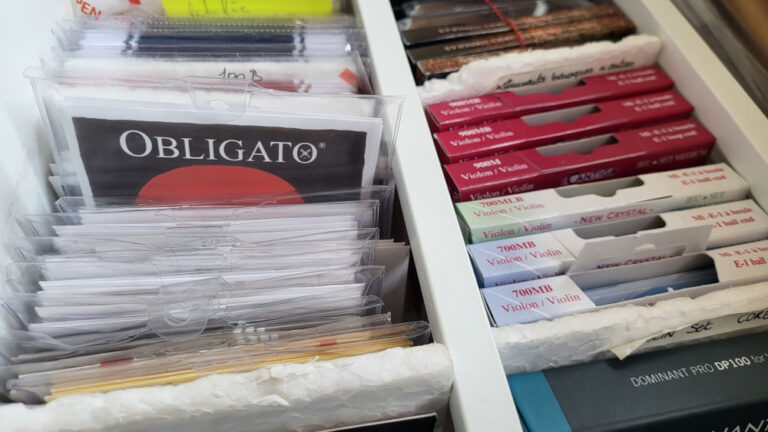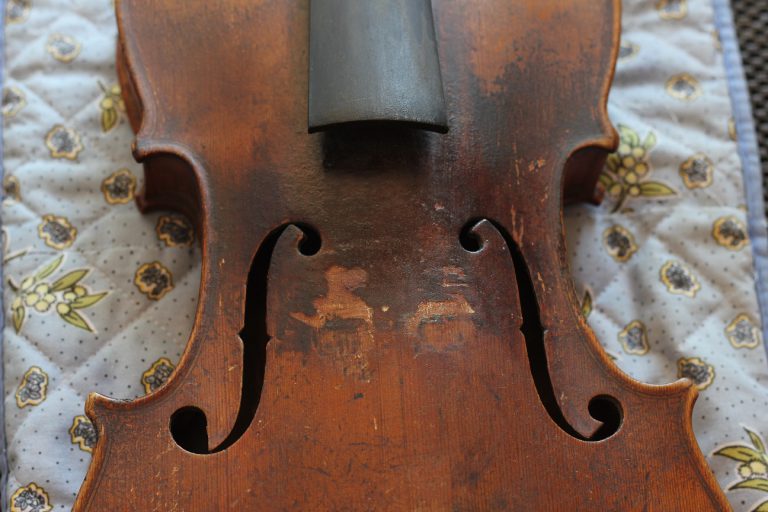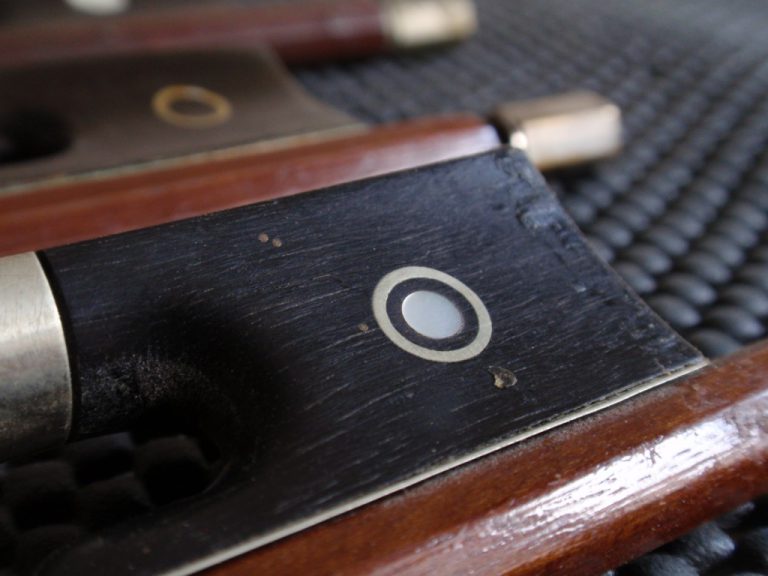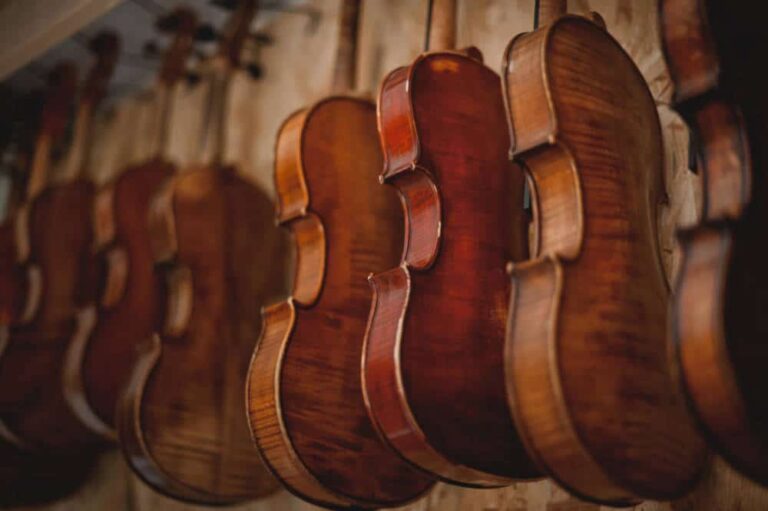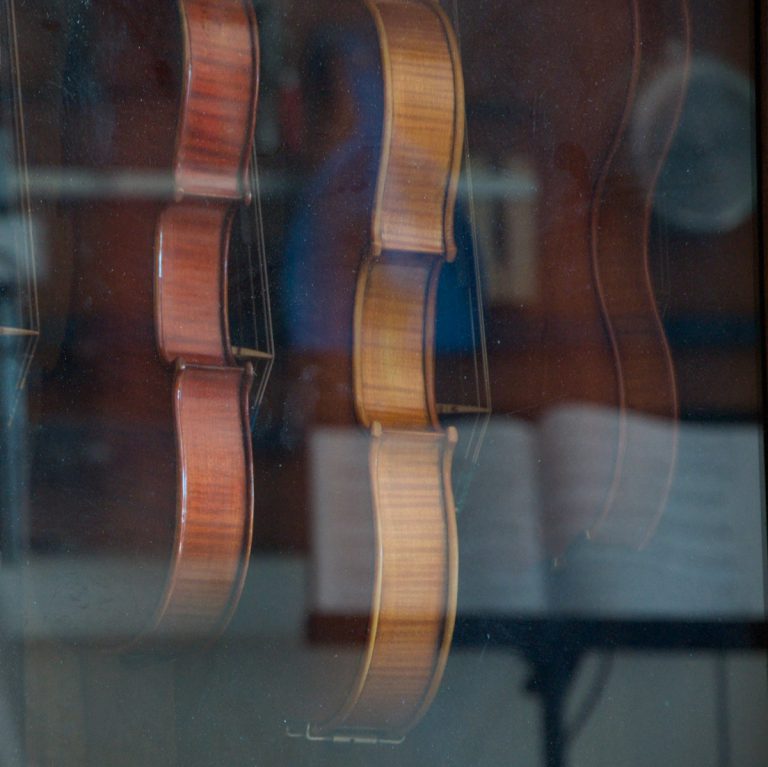La quête du son « ultime » est pour beaucoup de musiciens un investissement de temps et d’argent énorme. Et bien que le son d’un instrument provient pour beaucoup de l’expertise de son joueur, il est toujours possible d’améliorer le son d’un violon ou de compenser son caractère pour être plus en phase avec notre propre goût. De même, le confort de jeu sur un instrument est primordial pour la production du son par le musicien. Nous verrons dans les lignes suivantes comment influencer de manière positive ces différents critères.
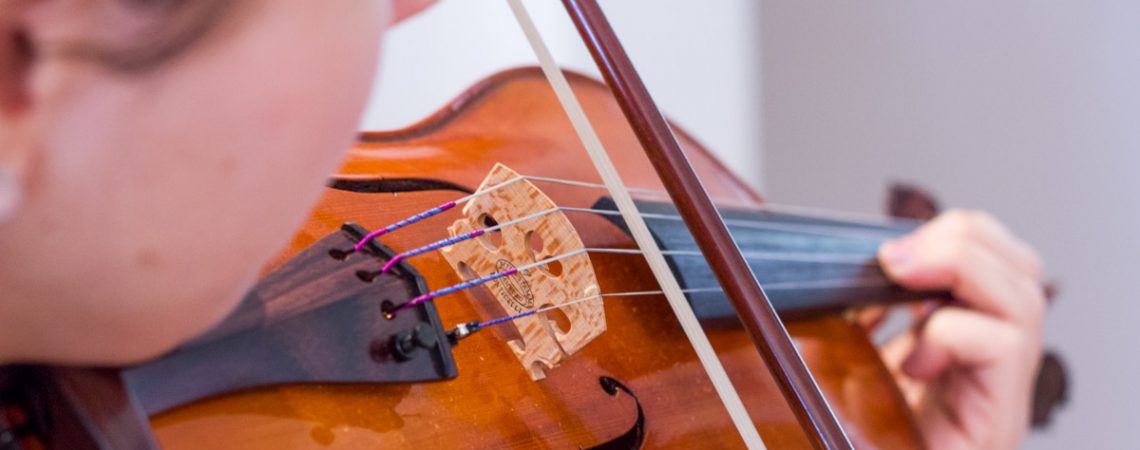
Factors for improving sound, playability and comfort
There are in fact two distinct aspects of an instrument that can be improved: sound and comfort. These modifications or adjustments depend mainly on the tastes and playing style of the individual violinist, who will know from experience what suits him best. Unfortunately, there is no absolute truth in this respect. There is, however, a standard that luthiers use as a basis for proposing an all-purpose solution that will suit the greatest number of players.
Although a student violin can never really be transformed into a luthier's instrument. But a few simple steps can make a significant difference to an instrument's sound and playability.
Stradivarius and Guarnerius instruments have such a wonderful sound. Apart from the fact that they are very well built instruments. It's because their owners attach great importance to assembly, optimization and maintenance. Not hesitating to invest huge sums of money to improve their sound as much as possible.
Enhance sound and change character :
- The strings
- The soul
- The easel
Playability and comfort:
- The saddle(at the top of the fingerboard)
- String height(bridge)
- Ankles
- The tailpiece and turnbuckles
- The handle
How to optimize and improve the sound of an instrument
As a musician, it's possible to take care of some of the sound quality and comfort of your instrument. However, in most cases, only an experienced luthier with the necessary tools will be able to carry out these modifications.
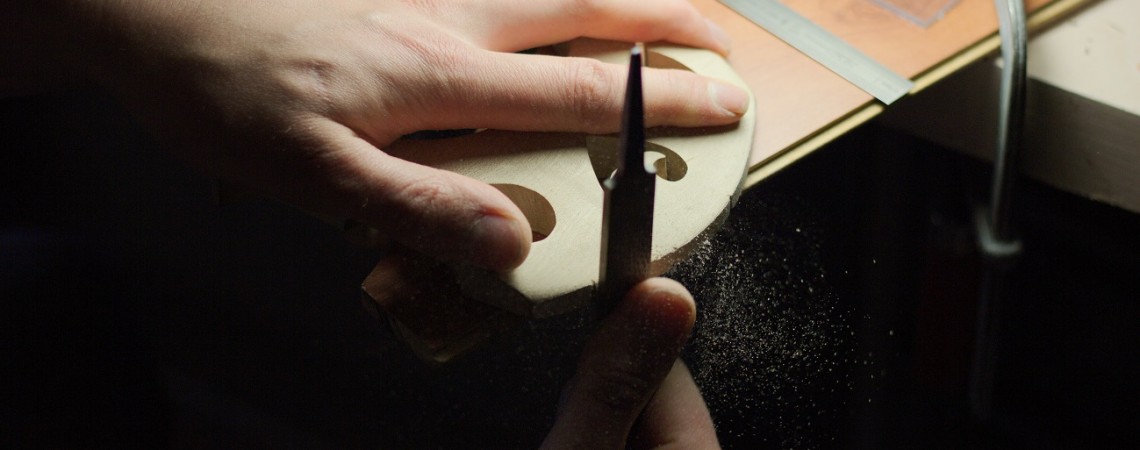
How a luthier can improve the sound of an instrument
The strings
Selecting quality strings and changing them regularly ensures that the full richness of sound is retained. The choice of strings depends on your taste, the character of your instrument and your budget. Don't hesitate to try out new models or different tensions, or even to use strings from different sets at the same time. This can help compensate for some of the instrument's shortcomings.
Good quality string sets can be expensive, but it's a relatively simple do-it-yourself operation. If you'd like to know more, this article can help you find your ideal strings.
[blog_posts items="1″ orderby="date " ids="5569″]
Core sizing and adjustment
The soundpost is a piece of spruce found inside the violin, under the sharp foot of the bridge. Its main function is to transmit vibrations between the soundboard and the back. It also counteracts the tension exerted by the strings on the arch. It is specific to each instrument and must be perfectly adjusted to hold it in position without damaging the soundboard or back. Its tension can be adjusted towards or away from the bridge to orient the sound of the instrument, altering its character and the balance between the strings.
Replacing the core of an instrument may be enough to restore its sound, but sometimes a new part has to be installed.
Au rythme des saisons, sous l’influence de la tension des cordes et des conditions atmosphériques l’instrument se modifie peu à peu. On peut dire qu’il « respire ». Au cours des premières années, plusieurs âmes peuvent alors être nécessaires pour accompagner l’évolution de sa personnalité sonore. L’utilisation de bois de grande qualité, sélectionnés et fendus et au diamètre scrupuleusement choisi procurent une réelle différence de timbre.
Bridge size and adjustment
The bridge is a central part that can wear and deform over time. This compromises both the sound quality and the playability of an instrument. Installing a bridge requires the tools and experience of a qualified luthier, but replacing it is not. The choice of a high quality piece of rigid, dense maple. The bridge itself is thickened to minimize its mass and thus its capacity to absorb sound. To optimize the transmission of string vibrations to the rest of the instrument.
A bridge is also a work of art in itself. Depending on the luthier's style, it can add a certain cachet to the instrument.
It is estimated that a bridge should be replaced every 10 to 20 years, even if playing conditions are still optimal and the bridge is still upright. This is because bridge wood ages, dries out and oxidizes. It becomes increasingly brittle, which can lead to a colder sound.
Other parts
The truth is that every part of the instrument, even the most unsuspected, can have a beneficial or negative effect on the sound. The bottom nut, for example, is an element that doesn't seem to possess the slightest mystery, yet its height influences the angle of the strings at the bridge, and therefore the sound.
The choice of chin straps, tailpieces, pads and other accessories also has an influence...
The bow
It's also worth remembering that the sound also comes largely from the bow: there's no point investing in expensive strings and a competition set-up if your bow has a 10-year-old bit.
[blog_posts items= »2″ orderby= »date » ids= »1772,2444″]
How to influence playability and comfort
String height
La hauteur des cordes est une histoire de compromis. Trop hautes, les notes seront difficiles à jouer. Trop basses, les notes seront étouffées causant par la même occasion des grésillements désagréables. Cette hauteur peut varier pendant la vie de l’instrument avec les mouvements des bois de manche ou de la touche. Les changements saisonniers d’hygrométrie qui font « gonfler » ou « dégonfler » la table d’un violon peuvent faire varier ces hauteurs. Le phénomène est particulièrement marqué dans les climats plus « tropicaux ». il faut alors parfois deux chevalets pour un instrument : un pour la saison sèche et un autre pour la saison humide.
In most cases, a simple fingerboard rectification or bridge change will solve the string pitch problem. But it may also be that the instrument requires a higher fingerboard, a new fingerboard, or even in rarer cases, a complete neck change with an enture(keeping a scroll and a pegbox and placing them on a new neck).
The handle
A neck is the link between the musician and his instrument, and must be clean, soft and free of defects. It must be clean, smooth and free of defects, so that the hand can move easily over it. In principle, it should be one with the nut and fingerboard, and perfectly adapted to the musician's hand. If these criteria are not met, a luthier will be able to correct the defects perfectly.
Ankles
Being able to tune your instrument with well-greased, note-holding pegs should be a matter of course. A luthier can quickly intervene on problems caused by recalcitrant pegs. To find out more, read our article on how to preserve your violin.
Tailpieces and turnbuckles
Modern tailpieces with four fine adjusters allow high tuning accuracy for all strings, and their materials make them very light. It's not too expensive to replace your old tailpiece fitted with heavy metal tuners.
Chin straps and cushions
The chinrest and cushion, if you choose to use them, are an important factor in comfort and playability. An uncomfortable posture and an unstable instrument are absolutely not conducive to a pleasant playing experience. That's why, if you experience permanent discomfort or pain, adapting or replacing these accessories may be the answer.
Other, more radical solutions for improving sound
There are a few much more extensive interventions that can improve sound and comfort. These will be briefly mentioned here, as they are costly and can quickly exceed the price of an instrument if carried out by an experienced luthier.
Replacing the handle
This operation helps to restore thickness to a neck that has become too thin or damaged. It also enables the neck to be tilted at the rightangle, improving both sound and comfort. The scroll and pegbox can be retained for the most precious instruments.
Table dam replacement
A l’intérieur de l’instrument, du côté des basses, se trouve la barre d’harmonie. Elle renforce et rigidifie la table d’harmonie sur sa longueur, jouant un rôle important sur la transmission du son. C’est aussi un facteur déterminant de la stabilité de la structure. Cette barre en épicéa peut « s’essouffler » ou se décoller au fil des années. Ainsi son changement devrait améliorer le son de manière considérable.
In any case, this operation in no way alters the instrument's value or integrity. In fact, this part is naturally designed to be modified or changed during the life of an instrument.
Resuming thicknesses
Some people will cry sacrilege, for it is true that this is an intervention with far-reaching consequences. In the past, luthiers have not hesitated to deform masterpieces in the hope of improving their sound. These operations could involve enlarging the soundholes, widening or narrowing the contours or ribs, or reworking the thickness. The consequences of such operations on antiques can be very damaging and should be avoided at all costs.
Il y a pourtant des instruments sur lesquels il peut-être acceptable de « corriger » les épaisseurs. Il n’est alors question que de terminer le travail des ouvriers d’autrefois parfois trop pressés par les rythmes de production.
Avertissements
Although the aim of these interventions is to improve the sound, the opposite result can also occur. If these changes are reversible, it's a lesser evil, but in any case, we must remain vigilant.

